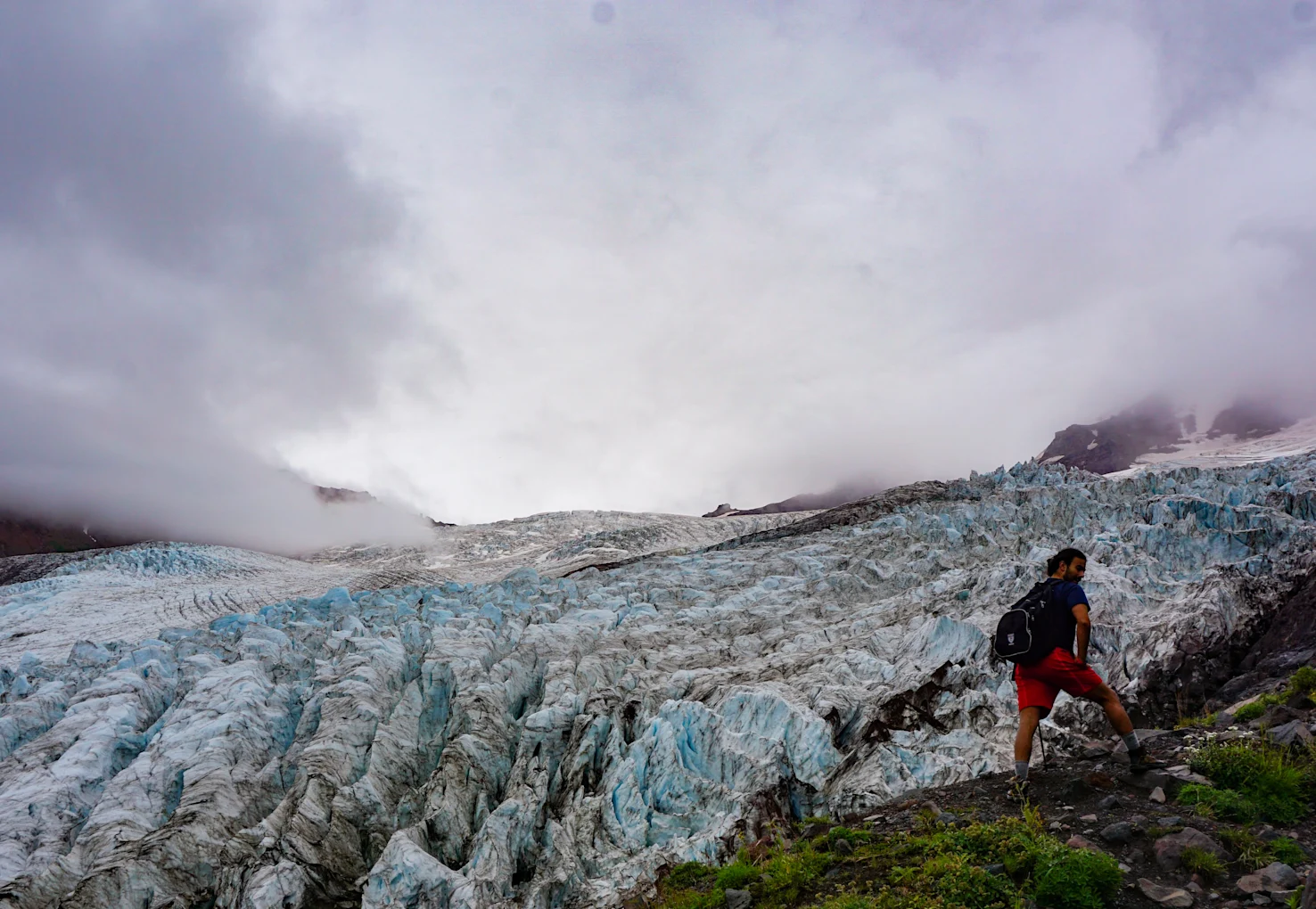The Pacific Northwest is paradise for any outdoor enthusiast, dressed in rugged terrain, dense forests, and wrapped in a jaw-dropping coastline. From Washington state’s lush green hikes, to Oregon’s hidden hot springs, and with just a hop over the border into British Columbia’s crowning “Rockies” jewel!
Have you ever found yourself on one of these PNW trails, only to discover that you’re completely unprepared?
Whether it’s blistered toes, broken bags or empty water bottles – we’ve been in your (hiking) shoes before!
At GeerGarage, we’re locals who are passionate about Washington’s nature. Our Lenders have hiked Pacific Northwestern trails countless times, and if there’s one thing we’d agree on it’s probably that there is no replacement for good planning and a few essential pieces of equipment.
We’re also big on sharing – it drives our gear rental program. When Borrowing, ask your Lender about any gear tips they might have, and share your hiking adventure plan! In the meantime, our list of essential equipment for hiking in the Pacific Northwest has got you covered, because our unique region differs from other parts of the US – let’s go get that PNW charm!
Safety first
Despite planning and preparation, unexpected accidents and injuries can happen when hiking. While the Pacific Northwest is full of stunning natural beauty, appreciating it can come with risks. Keep an eye out for poison ivy growing in low elevations and foothills – touching the plant can cause itchy skin and pesky rashes!
In other US states, it is rare to see signs of bears – not in the Pacific Northwest! If you hike along the Pacific Northwest Trail, there’s a high chance you’ll see grizzly and black bears - they are common across 94% of the trail!
Poisonous plants and wild animals are just a few things that could injure hikers in the wilderness. Bring a first aid kit while hiking for these unexpected accidents, particularly in remote areas where access to medical care could be limited.
At a minimum, include the 10 essentials for hiking:
Good footwear
Map & Compass/GPS incl. a backup for mobile phones (navigation)
Water (hydration)
Weather-appropriate clothing (insulation)
Light source (illumination)
First aid kit
Multi-tool
Sun protection
Layer, layer, layer
The Pacific Northwest is notorious for its mild, wet climate, but from Spring onwards a surprisingly warm sun can treat us in the afternoons. According to Seattle Travel, the city averages about156 days of rain a year and Oregon’s Portland has near-identical figures too. With such consistent rainfall, it’s always a good idea to wear waterproof rain jackets while hiking in the Pacific Northwest. Few things are as uncomfortable as trudging soaking wet in heavy hiking clothes – choose waterproof, light clothing to stay dry and comfortable!
Temperatures in the Pacific Northwest can drop to freezing from Autumn-Spring too – bring a hat, gloves and thick socks so you’re toasty warm on your hike (but can peel them off if things get too warm, or wet).
These boots are made for hikin’
The most important item you’ll need to go hiking in the Pacific Northwest (and arguably anywhere!) is shoes. With rocks and inclines, plus occasional snow and ice being typical for the region, a pair of sturdy hiking shoes that can withstand the elements is essential. But don’t forget, if you’re planning 20,000 steps or more, you want to minimize extra weight too!
Look for light, waterproof hiking shoes with good ankle support and cushioning, which will pair well with removable ice spikes (also known as microspikes for foot traction, or even yak tracks!) in cooler months – you will be wearing them for long periods, after all.

Let there be light
Hiking around the wilderness in the dark = not just spooky but unsafe too. Bring a backup light source, such as a headlamp – especially if you are hiking at dawn or sundown – to illuminate the trail. Don’t want to buy one? No problem! Rent a headlamp from your neighbors at an affordable price. Just make sure it has plenty of charge or carry spare batteries.
Trekking poles
Lean not just on your legs, but on your spare pair = trekking poles. These are the outdoor enthusiast’s ultimate companion, especially for traversing steep mountains and rugged terrain. The extra stability that trekking poles provide reduces the pressure on your knees and ankles, and gives hikers better balance on slippery ground.
Though sturdy trekking poles that can withstand a rough trek in the Pacific Northwest can be expensive, you can rent trekking poles from your local Lender for just $6.
Gearing up for the ultimate hike
With the Rockies in our backyard, the Pacific Northwest is the ultimate outdoor playground for land lovers. Take the best hike possible in this stunning landscape, by making sure you are equipped with the proper gear. By Renting, you don’t need to compromise your comfort and safety because buying the equipment for northwestern hikes adds up.
Renting hiking gear is a great option to save cash and create less wastage in the environment. With competitive rental prices, the GeerGarage platform makes awesome yet affordable hiking gear just a few clicks away.
What are you waiting for? Click Rent and take a (great) hike today!
